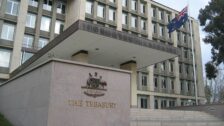Unleashing the potential of the superannuation Industry
The recently announced Your Future, Your Super proposed performance test has raised concerns on the potential of unintended consequences in the government’s pursuit of better performing funds.
Clearly, the government is squarely focused on the relationship of fees and performance against a standard asset allocation framework. However, many pundits believe the current proposal would see superfunds reduce allocations to active investment management strategies because of their higher active fees. Further, ‘benchmark hugging’ as to avoid career risk for those who deviate from the herd is a likely result, further reinforcing a move from active to more low-cost passive benchmark holdings.
Other consultants in the industry including Rice Warner have elevated issues with the proposal. A key issue is the lack of risk adjusted performance analysis in favour of a simple return comparison. While the objective of the performance test is well-intended, the proposal’s dependence on an oversimplified benchmark may create unintended risks from different sources.
Seemingly lost in the suggested performance test is a focus on maximising member outcomes and the portfolio benefits of absolute return objectives including successful alpha (non-beta) driven strategies. For example, most active hedge fund strategies aim to minimise capital loss and maximise compounded returns, not a benchmark return. Further, many utilise strategies with minimal correlation to traditional benchmarks which can build more robust portfolios regardless of fees.
More critically, those members in or near retirement are extremely sensitive to market loss. A more member centric approach would favour more dynamic and absolute return strategies to increase the likelihood of goals being met. As the investment horizon for these members is shorter than those in accumulation, different metrics of measuring performance will be needed.
Finding a Solution
If fee is a major hurdle that is causing the reduced allocation to active managers, then creative solutions can be developed which can capitalise on the scale and credibility of superannuation funds. Australia’s growing pool of large superfunds already have buying power that sees them enjoy significant fee discounts than the headline fees offered by most asset managers.
However, there are further opportunities for funds to put their buying power to work.
The scale of superannuation funds either independently or within a club, could embark on a patronage system of launching or expanding boutique investment managers who meet investors’ due diligence criteria.
This could be achieved through a seeding or allocation program of smaller sized managers who are creating and managing innovative investment strategies. The program would be structured as an investment in the asset manager’s working capital needs, combined with allocation to the strategy. In return, superannuation funds could receive no/low management fees for the assets managed, a right for future capacity if the strategy hits its intended objectives, and in return for backstopping the manager’s business, the superfund could participate in sharing of part of the investment manager’s future revenue streams.
To avoid potential conflict or agency risk, commercial relationships could be constructed without equity ownership in the manager, instead by establishing creative loan/debt repayment, whereby superfunds can obtain an added source of revenue via interest payments.
Incubation and partnership models are very prevalent in the Australian asset management industry. Within superannuation there are also notable successes. IFM Investors was created over 20 years ago by a group of industry funds. The benefit to members were reduced management fees for a specialised investment area and a share in fees of the asset management company.
Australian industry and public offer superannuation have grown substantially over the past 20 years, enabling many to create their own external manager partnership model. The amount of dedicated capital needed for each manager could be relatively low. The real value is in the credibility granted to a seeded boutique manager by its relationship with its institutional patron. For managers, given the opportunity to launch or expand their business with institutional backing would be advantageous for long term success.
As many contemplate the pros and cons of using external versus internal investment capabilities, a partnership with talented alpha-driven managers specialising in strategies that would be extremely difficult to replicate or internalise, would have distinct benefits. The scale and synergies of Australian superfunds with asset managers is an asset that is being underutilised.
Internalisation and Seeding
Several of the larger superannuation funds have begun building internal portfolio management teams for several reasons. One no doubt is to reduce external management fees. Another is to maintain control over a growing number of portfolio holdings and to obtain quick reliable snapshots of their portfolios for better asset allocation decisions. Intuitively this is prudent given the scale of large funds and potential fee savings.
However, there are key risks and costs with internalising investment teams. Apart from the heightened investment risk being borne directly by fund employees, there are issues of culture fit, salary differences, insurance costs, and retention policies for the new investment staff. In addition, the necessary technology costs of building trading, portfolio management, risk and reporting systems into a superfund’s operational framework, are extremely high.
Internalisation of passive strategies are more easily accomplished than more active ‘alpha’ strategies including hedge funds. It can be expected for several reasons that exceptional investment individuals would either seek to build their own business or work in large global asset management companies. Even if a pension fund were able to attract or develop a capable ‘alpha’ generating team, the challenge of retaining them is a real risk for the pension funds.
A “best of both worlds” approach could be developed where superfunds can internalise more passive investment strategies, the CIO can still efficiently control asset allocation shifts, and the fund can create allocations to partnered ‘alpha’ focused managers, without paying exorbitant fees, and instead could earn substantially more if their manager(s) is successful. Through a seeding relationship superfund’s can:
- Gain access to innovative active strategies at low management fees
- Carve out capacity rights in successful strategies
- Participate in revenue sharing of the new manager separate from investment returns
- Share in external manager’s IP and market information to add to a fund’s Investment Committee’s capabilities
- Achieve greater portfolio diversification and higher risk adjusted returns than peer funds.
- Grant the manager credibility, fast track asset gathering and fast track future shared fee income
Superfunds through these commercial relationships could further promote desired initiatives including:
- promoting managers that domicile their business in Australia to build the local industry
- requiring managers dedication of percentage of profit to social impact initiatives
- encourage relationships with Australian Universities to broaden education in funds management topics
- where ESG issues are important, supporting managers who emphasise ESG metrics as part of their business plans
Where challenges emerge, opportunities to innovate and to be creative, also emerge. Creative approaches to new challenges can drive new avenues for growth for Australian superannuation, their members and for the broader financial industry.
Australian Superannuation funds are held in high regard in the global pension industry. However, many fiduciaries are now overtaking our superfunds in seeding external alpha-driven managers. Many offshore pension and endowment funds have co-investment programs with established Australian managers. Given the investment talent pool in the country, many are now starting to look at how to extend their seeding platform to Australian managers.
It would be a great opportunity missed for superannuation funds who are looking for a solution to their government-imposed challenge if they overlooked a potential solution right under their noses.
Written by: Kim Ivey, Chair of Alternative Future Foundation and Michael Armitage, Founding Director of Fundlab Strategic Consulting.
Disclaimer
This material has been intended for educational purposes and to provide background information only and does not purport to make any recommendation upon which you may reasonably rely without further and more specific advice.
Fundlab Strategic Consulting P/L provides strategic consulting for institutions, HNW advisery practices and asset management companies.
Michael Armitage CAIA- ([email protected]) has over 30 years of experience including former Head of Investment Consulting Mercer and former Head of Fund Solutions at Milliman. Michael’s background has been focused within capital markets, hedge fund strategy research/replication, portfolio management, overlay solutions, asset consulting and product development globally.
Kim Ivey ([email protected]) has over 30 years of investment industry experience. A previous Head of Asset Consulting @ Towers Perrin, ex-Head of Risk Management at the Commonwealth Bank, ex-Director of The Alternative Investment Management Association. Currently a co-founder of Albany Capital.










